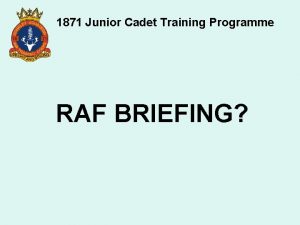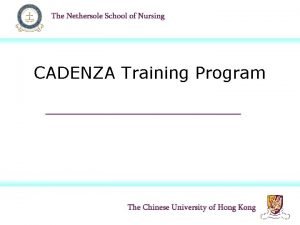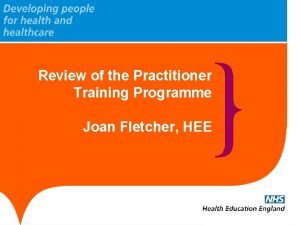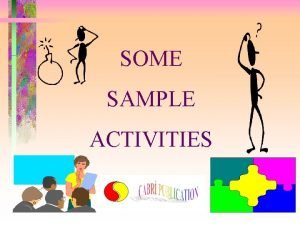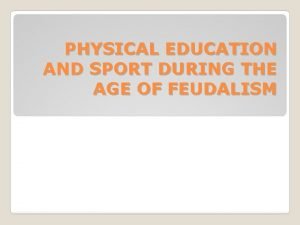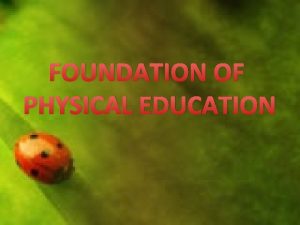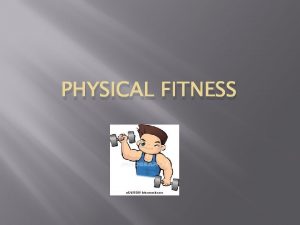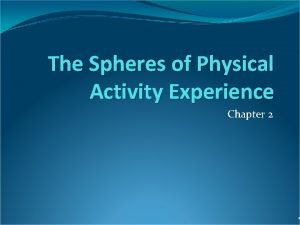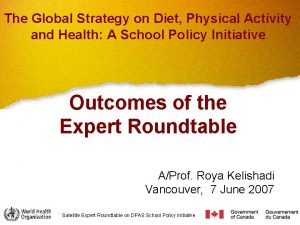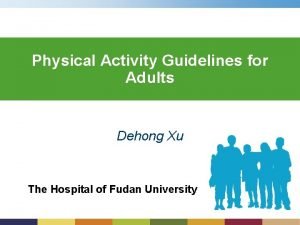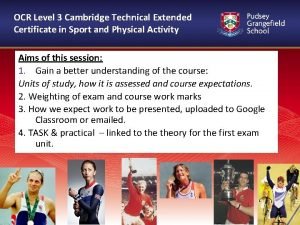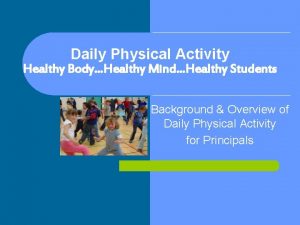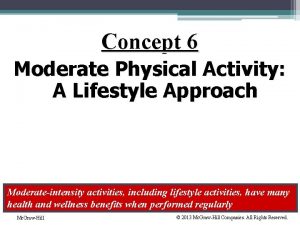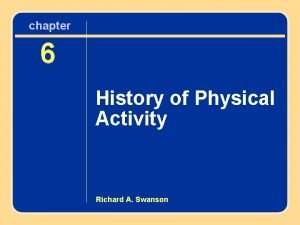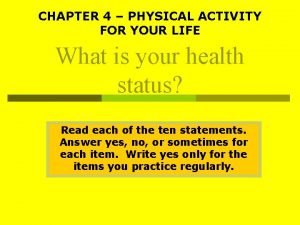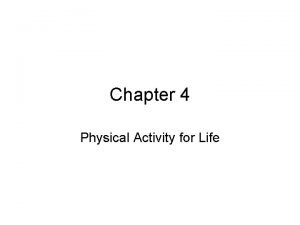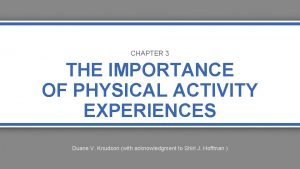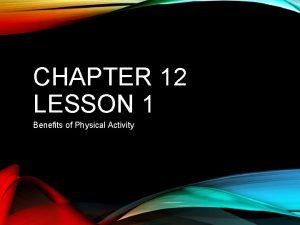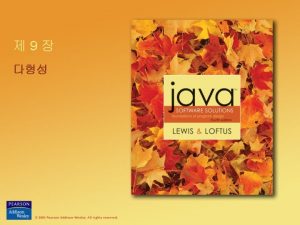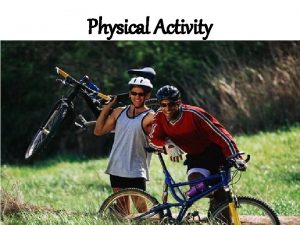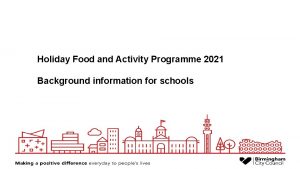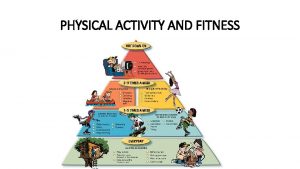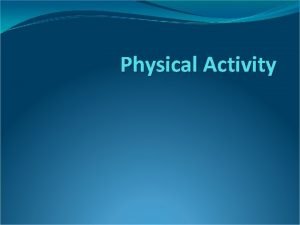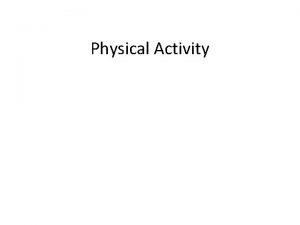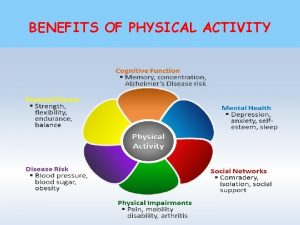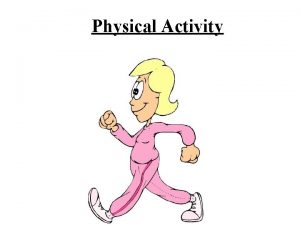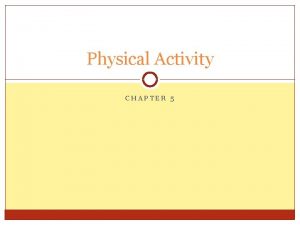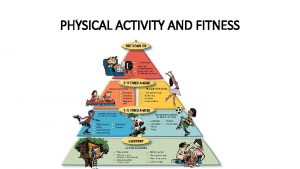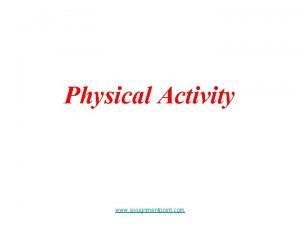Leicestershire Holiday Activities Food Programme Physical Activity Training








































- Slides: 40

Leicestershire Holiday Activities & Food Programme Physical Activity Training

Introduction

Who are LRS Leicester-Shire & Rutland Sport (LRS) is your Active Partnerships Team (formally known as a County Sports Partnership, CSP) for physical activity and sport across Leicestershire, Leicester and Rutland. Partnership working Programmes- early years to older adults


Why LRS are involved Lead for sport and physical activity across LLR Advocates for the CMO Physical Activity guidelines Supporting Barnardo's with some elements of project management/logistics (Barnardo’s the main grant body)

About You

Icebreaker Activity

Physical Activity Levels in Leicestershire & Nationally


1. What percentage of children in LLR meet the CMO guideline of 60+ minutes of activity a day, every day? A) 16. 9% B) 37. 4% C) 11. 2% D) 63. 4% 2. What percentage of children in LLR do less than 30 minutes of physical activity a day? A) 42. 9% B) 33. 3% C) 22. 4% D) 59. 8% 3. Nationally, are primary or secondary school children more active? A) Primary B) Secondary 4. What percentage of children nationally achieve 30 minutes or more physical activity and sport at school? A) 89. 0% B) 27. 7% C) 43. 7% D) 13. 4%

Source: LRS Physical Activity & Sport Strategy 2017 -21

Physical Activity Guidelines and Make Your Move

Do you know how much physical activity children and young people should be doing every week?

Children and Young People (5 -18 years) At least 1 hour (60 mins) each day of physical activity that increases their breathing and heart rates. Strength and balance activities including muscle and bone strengthening activities such as skipping and hopping, on 3 days a week. All 60 mins of this target needs to be achieved in you 4 hour session. Source: Active Lives Survey 17/18 Children and Young People

Make Your Move Make your Move is the localised campaign for Leicestershire, Leicester and Rutland linked to the UK Chief Medical Office recommendations on physical activity levels. For more guidance on how much physical activity we should all be doing to keep healthy, visit www. lrsport. org/activelifestyles

Requirements for you Minimum standards for 2019 providers are: Physical activity: clubs must provide activities that meet the physical activity guidelines on a daily basis (60 minutes)


Not engaging in any activity or just watching for long periods Sitting for extended periods of time. Unproductive Sedentary Behaviour Queuing

Practical Reducing sedentary behaviour

Break

Benefits of Physical Activity

Activity MENTAL IC PH YS AL The Health Triangle CI SO a) The PHYSICAL health benefits b) The SOCIAL health benefits c) The MENTAL health benefits AL In small groups, discuss what you think are the benefits of physical activity to children. Consider:

Physical Strengthen muscle and bones Develop motor skills Development coordination Support healthy growth Mental Cognitive development Concentration and attention Improve academic achievement Lower odds of depression Social Support learning of social skills Develop healthy habits Improve selfconfidence Promote independence

Motivations & Barriers to Children’s Physical Activity

Barriers to activity Research shows that these can be classed within 3 themes: Preference and priorities; Family and parental support; and Restricted access to opportunities for participation. Source: https: //www. lancashire. gov. uk/media/899797/physical-activity-updated-links-oct-2016. pdf

Activity Split into two groups and brainstorm the: 1) Barriers to activity for children 2) Facilitators / motivators to activity for children

Barriers to participation Not enjoying sport or exercise A frustration with complex or unclear rules Boredom Friends not participating Cost of activities Distance to activities Threat of intimidation by older children Parental restrictions Lack of current participation in, or enthusiasm for, sports and exercise (family/parents) Poor availability of facilities Playing sport in bad weather Lack of spare time (own or parents)

Motivations / Facilitators Fun and enjoyment. A sense of belonging to a team. Feelings of achievement. Opportunities for spending time with friends. Keeping 'fit and healthy' and in good shape. A supportive, encouraging and inspiring family. Provision of practical support from parents. Having access to a car. Having access to a garden. An opportunity to relax or forget troubles. A choice of sports opportunities. Clean park spaces and play areas. Provision of more extracurricular activities by schools. Making school facilities more accessible outside of school.

Making Activities Inclusive



Ways to Adjust Physical Activities to Include Students with Special Needs Alter speed, duration, space used, equipment or/and rules of play: Slow down the activity to accommodate students with limited mobility or poor aerobic fitness. Repetitions can be greater for higher levels of fitness or more mobile students. Reduce the duration of activities for students with lower levels of fitness. Utilize a smaller playing area to facilitate the ability to cover the area for less mobile or skilled students. Use different kinds of balls that are easier to hold, throw or see easily. Goal balls have bells inside so that blind students can locate them. Whiffle and Nerf balls fly more slowly than solid ones and reduce the fear of being hit. Rackets/paddles with short handles are easier to strike with than those with longer handles. Batting tees and suspended balls facilitate hitting or striking activities.

Ways to Adjust Physical Activities to Include Students with Special Needs Provide rule adjustments that increase incentives to include every team member or provide extra opportunities for less-skilled students to allow for greater participation. Playing noncompetitive games provides action and skill practice and involvement of everyone. Provide a peer-helper to participate with a student with a disability. Adult aids may be available to special needs students but a peer helper can often engage the student more fully and directly. The participation should provide choice and decisionmaking opportunities for the special needs student and a sense of participating with other students. Ask students to create activities that are inclusive of the limitations of classmates.

Activity Ideas and Planning

Task What games/activities did you play as a child and what were your favourite? Discuss in small groups and choose one to play with the whole group

Task Choose some equipment and devise a game to share with the other groups Include a child with a disability into your planning and explain the adaptations you would make to ensure it was inclusive

Date Time No. Children SEND Requirements Warm Up Activity (s) Cool Down

Useful links to resources • https: //www. nhs. uk/change 4 life/activities/accessibleactivities • http: //sdsc. org. sg/downloads/lets-play-together. pdf • http: //www. activityalliance. org. uk/how-wehelp/training/inclusive-activity-programme • https: //www. nhs. uk/10 -minute-shake-up/shake-ups

• Any questions? • Evaluation Forms / Marketing Forms • Any future support you would like? • Any equipment / resources you might need?

01509 564888 info@LRSport. org www. lrsport. org Sport. Park, 3 Oakwood Drive, Loughborough, Leics, LE 11 3 QF
 Leicester and rutland cricket league
Leicester and rutland cricket league Superfast broadband leicestershire
Superfast broadband leicestershire Leicestershire police cadets
Leicestershire police cadets Physical fitness grade 9
Physical fitness grade 9 Tropic level food chain
Tropic level food chain Holiday food trivia
Holiday food trivia Unit 2 food food food
Unit 2 food food food Grazing food chain diagram
Grazing food chain diagram The statement of cash flows helps users
The statement of cash flows helps users Group these activities into indoor and outdoor activities
Group these activities into indoor and outdoor activities Support activities and primary activities
Support activities and primary activities Primary and secondary activities
Primary and secondary activities Raf training programme
Raf training programme Cadenza training programme
Cadenza training programme Practitioner training programme
Practitioner training programme Andrew patterson world food programme
Andrew patterson world food programme Selçuk cabri english teacher
Selçuk cabri english teacher Physical education in age of feudalism
Physical education in age of feudalism Physical activity was historically primitive.
Physical activity was historically primitive. Pre spanish period physical education
Pre spanish period physical education Physical fitness is the ability to
Physical fitness is the ability to Work preparation activities
Work preparation activities Reactants products and leftovers
Reactants products and leftovers Debye huckel limiting law
Debye huckel limiting law Aoa diagram
Aoa diagram Form content and use
Form content and use Activity 2 finding the sequence
Activity 2 finding the sequence Activity 2 whats the term
Activity 2 whats the term Activity 1 activity 2
Activity 1 activity 2 Objectives of physical education
Objectives of physical education Global strategy on diet physical activity and health
Global strategy on diet physical activity and health Moderate physical activity examples
Moderate physical activity examples Ocr level 3 sport and physical activity
Ocr level 3 sport and physical activity Moderate physical activity examples
Moderate physical activity examples Fit formula for moderate physical activity
Fit formula for moderate physical activity Between 1950 and 2000, physical activity professions
Between 1950 and 2000, physical activity professions A way of life that involves little physical activity
A way of life that involves little physical activity Chapter 4 physical activity for life
Chapter 4 physical activity for life Professional experience in physical activity
Professional experience in physical activity Chapter 12 physical activity and fitness
Chapter 12 physical activity and fitness Chapter 3 benefits of physical activity
Chapter 3 benefits of physical activity












